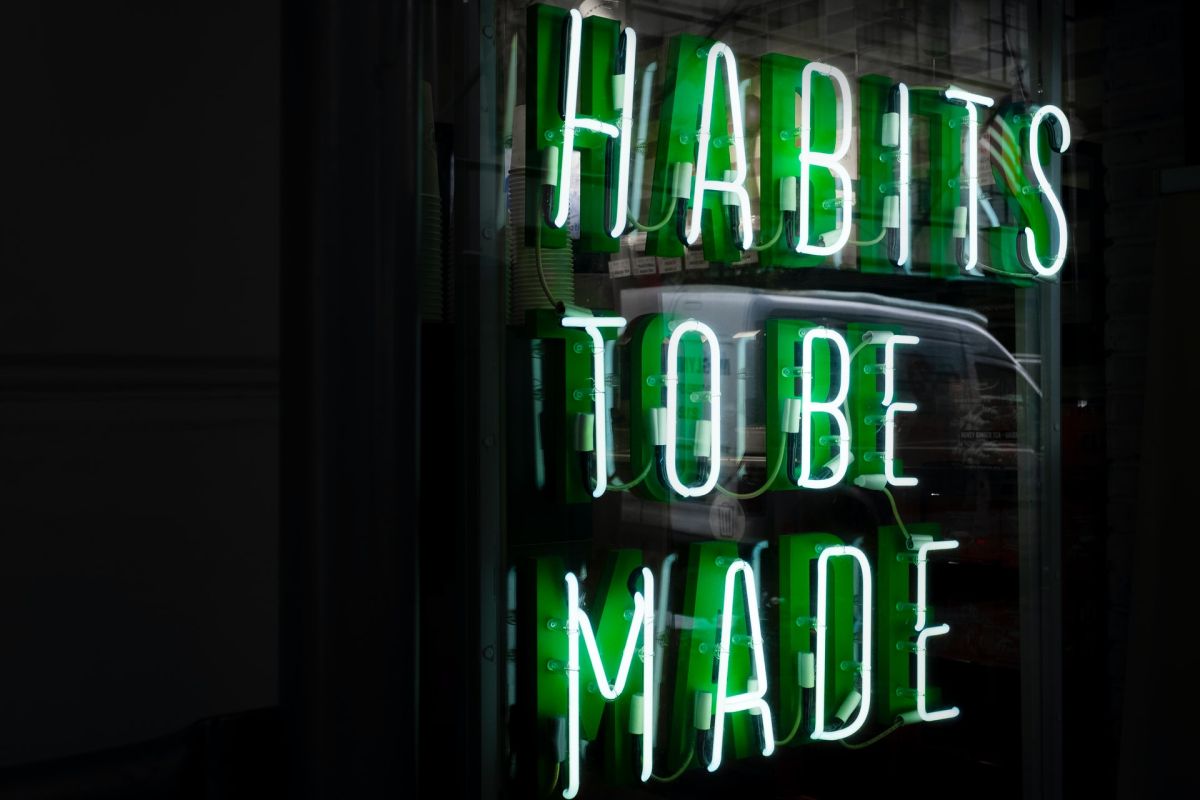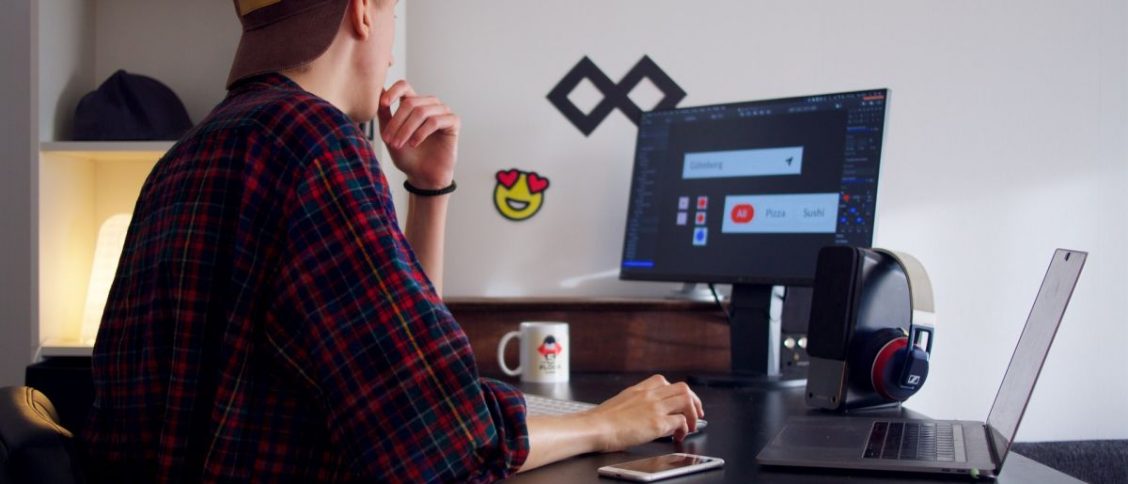Your first month as a full-time freelancer will be a rollercoaster of emotions and fails. Mostly bad emotions, and mostly hard fails. But somewhere in there, like a little spark of magic, you’ll find that one piece of your soul that says “yes, regardless of the mess, I’m doing the right thing”. It can turn upright as you’re about to quit, but even so, if you catch it, you’re forever a freelancer.
In this guide:
Before you quit your job…
As much as you think you’re ready to quit your job and start out as a freelancer, you’re not. You will never be ready. This is why so many people who would thrive on their own are still stuck at the office. If you do feel ready, you’re still not ready. You need to take care of some “management” things before you actually quit. There’s not much to them, so here it goes.
Before you quit, put away 3-6 salaries
It’s crucial to have some money in the bank before you move to a full time freelancing career. Why? Because life doesn’t usually match your plans. You might be good at it, yes. But a lot of people are good at what you do, so there’s competition. This means that for the first month or so, you might have to pay yourself from savings. This is why you need to put away up to 6 salaries before even thinking about turning in your resignation.
Before you quit, have a Plan B, and a Plan C
It’s one thing to quit, and save some money for if and when things simply don’t work out. But what do you do if you simply suck at freelancing? You should always have a Plan B, and then a Plan C, for if and when you simply decide that, for some reason, this is not for you. It happens. It might be a simple thought, like it was in my case for so many times, or the brutal truth.
Before you quit, establish that you don’t work for free
The last thing you should do before quitting your job and becoming a freelancer is to establish your boundaries. And the most important of all is, never work for free. You’d never work for free at your current job, right? So why would you do free work to strangers who you don’t even know? Never accept unpaid work and never sell yourself for less than what you’re worth.

Day 1 – Quit
The big day is here. You’re ready to quit your job and start fresh. Do it with respect to your soon-to-be former boss. I’ve quite while sending many thanks to him, keeping a friendly tone and appreciative speech. And now, years later, we’re collaborating on content, news, and web design. Never quit your job with a scandal. Do it gently, with compassion and gratefulness.
Day 2 – Panic
Suddenly you realise you’re on your own, with no job, no benefits, no salary, no colleagues. It’s time to panic. Take this day to panic. Do nothing but panic. Get it all out. Write it down, what is it that you fear? Panic a lot, cry, laugh, eat some ice cream. Have your panic attacks.
Day 3 – Start working
Done panicking? Good. This is your very first day as a full-time freelancer. What should you do? Well, if you’re on one of those jobs websites, start looking for proposals! It’s a good place to start, as well as write a little pitch and start telling the world (and by that I mean your close friends and past collaborators) you’re a freelancer now. Put yourself out there.
Days 4-5 – Plan
Welcome to the end of your very first week as a freelancer. You’re still making no money, so the best thing you can do is to plan for the future. Put down some working hours, some breaks, make yourself a nice schedule of how you’re going to spend your freelancing days. And if that first prospect comes back and asks for work, schedule your very first working hours with them.
Days 6-7 – Weekend 1
Stop and stare at the ceiling for a weekend. You’ve gone through a big, life-changing week, so you deserve some free time. Do not work on the weekends, and especially on Sundays. Leave everything out which is work-related. Watch movies, spend time with your loved ones, relax!

Day 8 – Your first dispute
Mondays are usually productive days, and because you’re a great freelancer, you’re working hard to land on your first gig. Be it a little logo design, or a short 500-word article, a translation, whatever. You’re going back and forth with the client, and settling the conditions of your first work together. After hours of talks, they finally send in the offer, and you hit the “Accept” button.
For some reason, the talk with your first prospect led to your first gig. And although you did your best, they are not satisfied. This happens all the time! It happened to me, when I started out, so don’t panic. The best way to go for any dispute, especially at the beginning, is to settle it in a friendly way. Worst case, you lose money. Best case, you win a client for a very long time!
Day 9 – Managing time
Time management is the most important skill you’ll ever learn with your freelancing. When it comes to being your own boss, it’s both liberating and brings tons of responsibility. You can’t just wing it. “Oh, I’ll leave these for 3 PM, it’s fine” is a clear indication that your own intelligence is working against you. Put on a schedule, and stick to it, day by day. Work, don’t waste time.
Days 10-12 – Inconsistency
By day 10 you should be okay with that initial dispute if you’ve kept a friendly tone and made the edits the client has asked for. He might’ve even given you some more work. Also, another prospect should’ve been turned into a client by now, so you’ve got two fishes to fry. This is great, but it usually comes with a bolt of inconsistency. Both from you and your clients. Why?
In the beginning, it’s hard to keep it consistent. You’re freed from office hours, so why should you work in the mornings? Because you’re programmed to be at your best then, that’s why! And client inconsistency? Yes, because clients are also humans, so they often miss deadlines or come back with explanations you’ve asked for days after. Keep calm, and move on.
Days 13-14 – Weekend 2
Once again, weekends are made to be spent away from work. Sometimes though, I use Saturday mornings to sort things out. Folders, notes, whatever it is. Even errands. But that’s it, NO actual work. Also, I spend one hour on Sunday nights to get things sorted for Mondays, which are my most productive days of the week. You should do the same, try it out!

Day 15 – Coming together
This is your third Monday as a freelancer. Remember your first, when you quit? And then panicked? Yes, time to do that again, but this time as a coming together of everything. This is the day in which you see and feel the life of a freelancer. Waking up later than usual, making coffee, enjoying a little time with yourself in the morning, no phone, no email, no buzzes.
By now, you’re familiar with how things look and work. You’re good with your clients, you’ve made progress with some prospects, you’re doing work. It’s not amazing in terms of money, but you’re about to make enough to cover your internet. So your work literally pays for your means of work. You’re covered, although you’re far from it. But you feel it coming together, and that is it.
Day 16 – Your first payment
Speaking of things coming together, today is your very first payment day. Yes, it took you 16 days of work and despair to reach this point, but today you actually receive your first money as a freelancer. And don’t worry if it’s 20, or 100, or 500 bucks, that’s not the point. The point is to tell your brain that yes, this works, and yes, you can do it, and yes… money!
Day 17 – Prospects
Today, you’re deep into the talks with two prospects. One of them is looking for a permanent freelance writer to stay with their firm for a year or so. They pay lower, but they will deliver constant work and can assure you of getting a weekly or monthly paycheck until the end of the year, at least. The second looks for a writer for a one-time job, great pay, but very demanding.
What do you do? Naturally, since you’re at the start of the entire thing, you’d go for the big bucks, one-time payment, thinking “oh, I have time for bigger, more permanent clients later”. You’d be wrong. Consistency is key with freelancing. Being a freelancer does not mean constantly searching for clients. The longer a client needs you, the better. Prospect #1.
Day 18 – Long day
If you thought freelancing from home or from a coffee shop is all about posting Stories about how cool it is on Instagram, you know by now you’re wrong. It’s work, hard work, despair, uncertainty, and a lot of trial and error. And long days, like this one. Today, you’ve got a new client who you have to set up, an older client asking for more work, and a few prospects.
What do you do? You take a notebook and break it down on tasks. Hourly tasks work best for me, but maybe you need just 30 minutes for one task before the next. Break it down and put in the work. Embrace the long day. Feel it. Make it count, with every minute of every hour you spend at the desk. It’s such a nice feeling, being able to work for yourself. Long days are good!
Day 19 – Homework
Every single time before the weekend, I like to sit down and do homework. It’s just looking through the stuff I’ve done so far, and then planning the next few tasks. For a day or two, or for a week ahead, if I’m feeling it. Homework is starting something you would have not, just so you can earn some minutes the next day. Even if it’s just writing a title in a document. It counts.
Days 20-21 – Weekend 3
I love some TV shows that I’m always rewatching, like “Modern Family”, “The Big Bang Theory”, or “How I Met Your Mother”. I usually spend my weekends watching these, although I’m always planning on “watching something new this time!” and then never do. Dedicate this weekend to rewatching some of your favorite shows. Get some creativity and inspiration going, you know?

Days 22-24 – Productivity
With two clients on hand and a bunch of serious prospects, you need to turn on your productivity settings. Schedule your days right, put in the work, and do the best you can do to make it happen. There’s no room for errors or mishaps, it’s just you and your work. Being productive is about cutting distractions. Leave the phone on mute, turn off the TV, and go!
Day 25 – Breakdown
So you thought freelancing is all about working from a beach in Thailand, eating $1 pad thai, and enjoying your loads of free time at the night market? No, that’s not it. That’s just so you buy the courses and books those people are advertising for, but in real life, freelancing comes with a few breakdowns here and there. This is your breakdown. Learn from it. Embrace the chaos of it.
Day 26 – Pulling yourself up
See, that wasn’t that bad, was it? Now it’s time to put things into perspective once more, and then take it all from the beginning once again. Reschedule your lost time over the breakdown from yesterday, apologise to clients for missing a day, and calmly start working again. Freelancing is about knowing when to pause, and how to do it properly to not injure your gig.
Days 27-28 – Weekend 4
Great weekends start with making sure everything is in order. Sent that invoice? Email? Document? Next week’s schedule? Good, if these are sorted, then you can do whatever you want from now on until Sunday night when it’s a great idea to do a little homework. Splurge!

Day 29 – End contract
It’s both a sad and a happy day when a client terminates a contract. It’s sad because one of your revenue streams ends. It’s also good because it means you’ve got a new portfolio item and hopefully a good review from your now former client. Ending a contract with someone should be a great moment, for both the freelancer who’s making money, and the client for successfully receiving his work and being very happy about it.
Day 30 – New client
Freelancing is all about finding the right people to work with. If yesterday was your first “end contract” day, today a new client has set up a contract with you. And it’s about something fun, and exciting. Something you’re passionate about, like writing about books, or data entry, website design for a furniture store, whatever you’re excited about. It’s new and fun!
This is the best thing about freelancing. Every single day can be the start of a new adventure, completely different from the last one. It can be the beginning of a long, fruitful collaboration with a great client, and part-time friend, who’s going to be there for you for years. When one client leaves, another will pop up. Remember this, for those days or weeks when things are slow.
Patience, this is the secret to freelancing. Having the courage to say no to the wrong people, and wait for the right ones. And making sure those people, once turning into your clients, are happy with your work, communication, and consistency. Take everything into account, and do it with passion. If you do these right, you will never work for another day, ever again!
—
Hei, just a quick thing before you leave:
First, nice of you to read thus far, it means that you’ve enjoyed my writing!
I’m not here to ask you for any likes, shares, or comments, although that would be cool of you! Instead, I’m offering you a chance to have an even better piece, sort of like this one, but better, written for you by a content creator. That would be me! Check out my Services, Portfolio and Testimonials pages for details. And then shoot me an email at the address you’ll find on the Contact page.
If you’re a freelancer like me and are confused about learning how to make money online, especially through writing but also programming, design, or social media management, you can buy my book. It’s called “From 0 To $2543 A Month With A Crappy Laptop – The Freelancing Course From A Self-Made Content Creator Boss” and you can find it on Amazon at 50% off!



